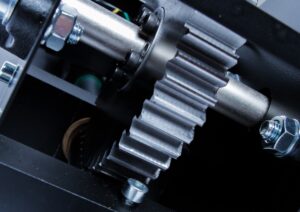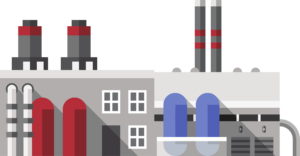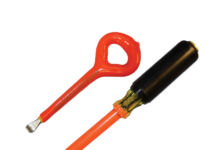For any manufacturer, effective maintenance is essential. The right approach can significantly extend the lifespan of a machine while reducing downtime, preventing damage and cut down on the need for repairs.
Two of the most common maintenance strategies are corrective and preventive maintenance. The two strategies differ significantly in terms of investment, time needed and potential results.
Knowing the differences between the two will help a manufacturer determine which is best for their business.
Preventive Maintenance
 Preventive maintenance has long been considered the gold standard for manufacturing maintenance strategies, and is one of the most popular maintenance strategies, favored by around 80% of all maintenance personnel according to a 2018 Plant Engineering survey.
Preventive maintenance has long been considered the gold standard for manufacturing maintenance strategies, and is one of the most popular maintenance strategies, favored by around 80% of all maintenance personnel according to a 2018 Plant Engineering survey.
With this approach, a manufacturer follows a maintenance schedule — either their own or one developed by an OEM. On a regular basis, technicians will conduct repairs, component replacements and maintenance checks that help to ensure the machine is kept in good working order and that issues are caught early.
The exact repairs and checks needed will vary from machine to machine. An industrial press, for example, will need technicians to regularly inspect tool wear, adjust the mechanical assembly for tightness and add lubricant as needed.
Research on the approach has demonstrated that preventive maintenance can significantly extend the lifespan of manufacturing equipment and decrease maintenance costs over time
One 2017 study found that 60% of best-in-class operators used the approach, and that, on average, they saw an 11% decrease in year-on-year maintenance cost and a 9% decrease in year-on-year downtime.
Preventive maintenance also creates a good foundation for cutting-edge maintenance techniques, like predictive maintenance.
This approach uses IoT-based performance monitoring and AI algorithms to predict machine health based on current operational parameters — like heat, vibration, timing and pressure.
Once a baseline of machine performance is established, the predictive system can alert site maintenance staff when a machine is performing unusually or about to fail, helping to further reduce downtime and maintenance costs.
Potential Drawbacks of PM
The strategy, while widely adopted, is not perfect. For example, issues can easily arise and cause machine failure in between maintenance checks. A preventive approach wouldn’t be able to prevent downtime in this case.
Some maintenance checks can also put a machine at risk of damage. Too much preventative maintenance can expose sensitive components to dust and other airborne particulates. Parts that must be disassembled to be inspected may not be put back correctly, potentially causing damage or reducing machine performance.
Even in cases when checks don’t cause damage, they still cost time and money. Machines need to be properly shut down, then locked and tagged out to be safely inspected. The technician handling the check has to be paid or redirected from other work, and the machine will be out of commission during the inspection, potentially reducing site productivity.
The benefits of the strategy can also vary significantly depending on how it is implemented. Most businesses, for example, will adopt SMART goals or aim to improve a specific KPI.
Preventive maintenance also typically requires active and ongoing review of maintenance schedules and the effectiveness of the approach. The specific implementation of the strategy often needs to be adapted over time to remain effective.
This is especially true when a business is adapting to unfamiliar machines or does not have an OEM maintenance schedule to inform their strategy.
Corrective Maintenance
Corrective maintenance is sometimes used interchangeably with reactive maintenance — a responsive approach where repairs are only ordered when machines fail or begin to behave erratically.
Reactive maintenance is not planned or scheduled, and reactive work orders are only placed once downtime is inevitable because the machine to be repaired is non-functional or cannot function safely.
The term may also be used to describe a slightly different approach. This corrective maintenance strategy goes beyond the reactive maintenance approach and solves problems as they become apparent, even if they don’t prevent a machine from functioning. A business with this strategy will task technicians to repair components of faulty equipment that is still mostly in good working order and capable of functioning safely.
Combining Corrective Maintenance With a Preventive Approach
 In some cases, corrective maintenance will be a business’s entire maintenance strategy.
In some cases, corrective maintenance will be a business’s entire maintenance strategy.
In other cases, businesses use corrective maintenance as a complement to preventive maintenance. For example, a maintenance technician spots a problem during a standard repair — like a loose belt, faulty wiring or leaking hydraulic fluid. They will issue a corrective work order, scheduling repair of that newly discovered problem for some time in the near future. Depending on the nature of the problem, they may begin repairs right away.
This use of corrective and preventive maintenance together helps to provide additional benefits over either technique alone — reducing emergency maintenance orders, extending equipment lifespan and decreasing equipment-related downtime.
A solely corrective maintenance strategy, like the reactive maintenance approach, will reduce the budgeted cost of maintenance, but may not necessarily reduce year-on-year maintenance costs.
Reducing maintenance checks means less money spent on paying technicians and less scheduled downtime. The strategy could be effective for equipment that is not essential. However, it’s likely to be risky in any case — businesses that adopt a corrective maintenance strategy should accept that some problems will go undetected until they begin causing noticeable performance issues.
Operational Monitoring and Corrective Maintenance
 Typically, if a business has adopted a solely corrective approach to maintenance, they won’t plan for regular repairs or maintenance checks as they would with preventive maintenance. They also won’t follow recommended maintenance schedules provided by original equipment manufacturers or developing their own.
Typically, if a business has adopted a solely corrective approach to maintenance, they won’t plan for regular repairs or maintenance checks as they would with preventive maintenance. They also won’t follow recommended maintenance schedules provided by original equipment manufacturers or developing their own.
The downsides of the approach could be mitigated with certain additional maintenance strategies. With real-time operational monitoring using the internet of things, for example, you could leverage dedicated sensors that continuously monitor for signs of damage and component malfunction.
This could provide additional protection against damage and downtime, even without the regular maintenance checks that preventive maintenance ensures.
Over time, however, a business following the solely corrective approach is more likely to deal with equipment-related downtime, costly repairs and shorter equipment lifespans.
Corrective vs. Preventive Maintenance: Which Is Right for Your Business
Both corrective and preventive maintenance are common approaches to machine maintenance.
In general, preventive maintenance will cost more in the short run but provide significant long-term savings compared to reactive or solely corrective maintenance. Running a machine to failure tends to be much more expensive than maintaining it, but those high costs will be deferred — at least, for a time.
Many businesses use a combination of preventive and corrective maintenance to keep their equipment running. Some businesses go further and use new technology — like IoT sensors — to provide operational monitoring and enable strategies like predictive maintenance.









































